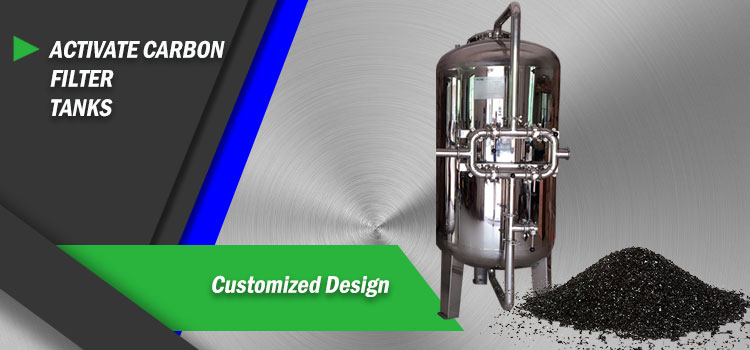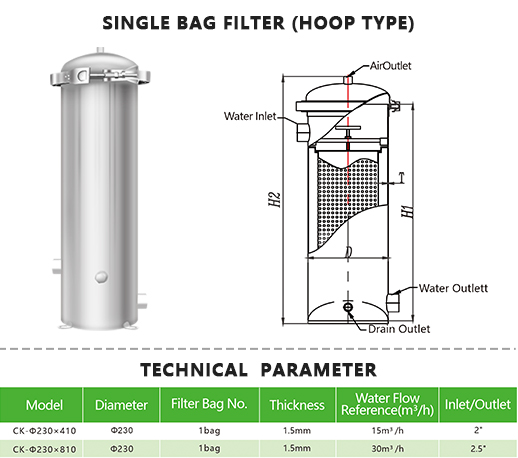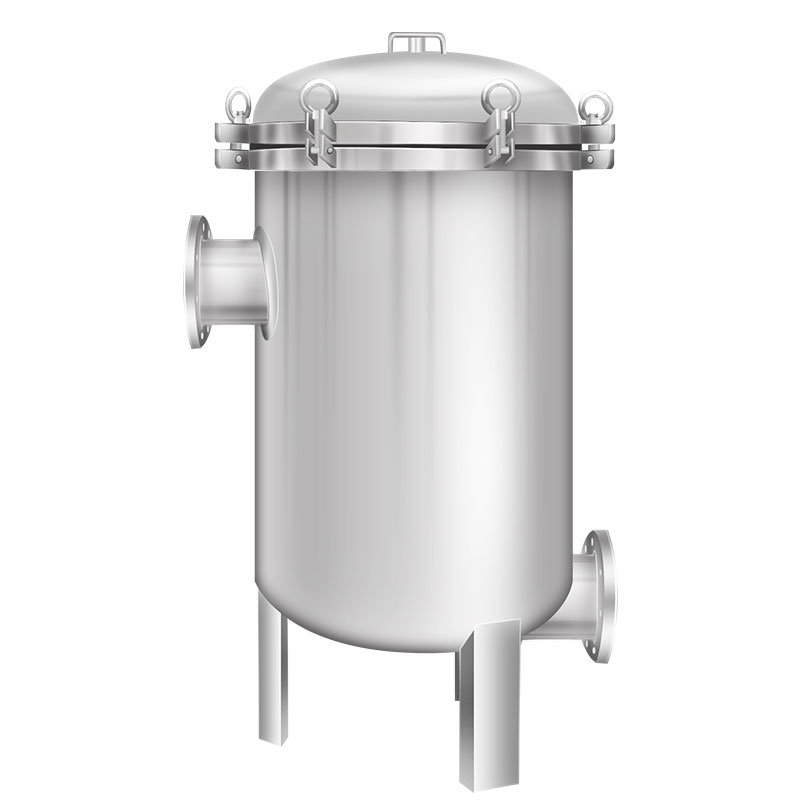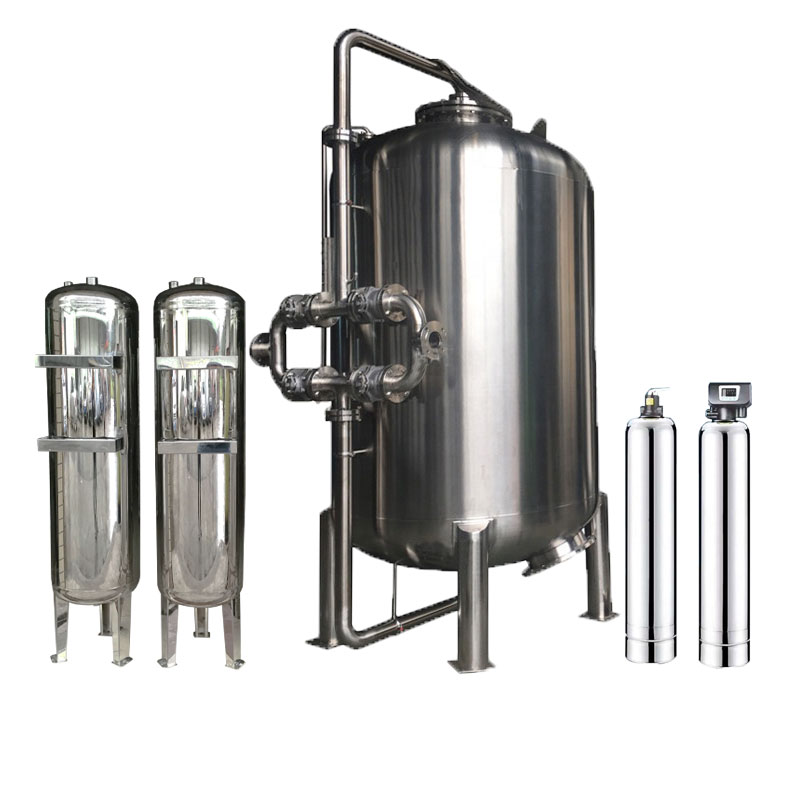What grade of stainless steel is used in stainless steel water filters?
Stainless steel water filters are widely used in household, industrial, and commercial water treatment systems because of their durability, corrosion resistance, and ease of cleaning. However, many people are not familiar with the specific grade of stainless steel used in stainless steel water filters. Different grades of stainless steel have significant differences in composition, corrosion resistance and application scenarios. These factors directly affect the service life and effectiveness of the water filter.
This article will take an in-depth look at the stainless steel grades commonly used in stainless steel water filters, as well as the differences in performance between these grades, to help consumers better understand the material selection of stainless steel water filters.

What is the basic concept of stainless steel?
Stainless steel is an alloy steel whose main component is iron and also contains elements such as chromium, nickel, and molybdenum. The most significant feature of stainless steel is its good anti-oxidation and anti-corrosion properties. These properties are mainly due to a protective film of chromium-rich oxide formed on the surface of the steel. According to different compositions and microstructures, stainless steel can be divided into several categories such as austenitic stainless steel, ferritic stainless steel, martensitic stainless steel and duplex stainless steel.
Grades of stainless steel are usually classified based on their composition and properties, with the most common classification standards including American Society for Testing and Materials (ASTM) standards and International Organization for Standardization (ISO) standards. Each stainless steel grade has specific chemical composition ratios and physical properties suitable for different applications.

What are the commonly used grades of stainless steel for stainless steel water filters?
Stainless steel water filter selection involves a variety of stainless steel grades, each with its own specific pros and cons. Below are some of the most commonly used grades of stainless steel used in water filter manufacturing and their characteristics.
304 stainless steel
304 stainless steel is one of the most common austenitic stainless steels and is widely used in the manufacture of water filters. It has high corrosion resistance and good mechanical properties.
● Composition: 304 stainless steel mainly contains 18% chromium and 8% nickel, so it is also called 18/8 stainless steel.
● Corrosion resistance: 304 stainless steel has excellent corrosion resistance in most environments, especially in general household water, drinking water and industrial water, and its performance is very stable.
● Application scenarios: Due to its good corrosion resistance and economy, 304 stainless steel is often used to manufacture household water filters, kitchen utensils, food processing equipment, chemical equipment, etc.
● Advantages: 304 stainless steel is affordable, has good durability and long service life, and is widely used in stainless steel water filters.
316 stainless steel
316 stainless steel is another common austenitic stainless steel. Compared with 304 stainless steel, 316 stainless steel has stronger corrosion resistance, especially in chlorine-containing environments.
● Composition: 316 stainless steel adds 2-3% molybdenum element on the basis of 304 stainless steel, which significantly improves its ability to resist pitting corrosion and intergranular corrosion.
● Corrosion resistance: 316 stainless steel is particularly suitable for environments containing chloride ions, such as seawater or water treatment with high chloride content. It is also widely used in chemical equipment and marine equipment.
● Application scenarios: Due to its excellent corrosion resistance, 316 stainless steel water filters are often used in high-demand industrial environments, laboratories, and water treatment systems that require long-term stable operation.
● Advantages: Although the 316 stainless steel water filter has a higher cost, it has unparalleled durability in highly corrosive environments and is an ideal choice for equipment that requires high reliability and long life.
201 stainless steel
201 stainless steel is a stainless steel with low nickel content. Due to its low cost, it is often used in some situations where corrosion resistance is not required.
● Composition: 201 stainless steel contains 16-18% chromium, but the nickel content is low, only 3.5-5.5%, and manganese is used to partially replace nickel.
● Corrosion resistance: 201 stainless steel has weak corrosion resistance, especially in acidic or chloride environments. It is more suitable for applications in ordinary environments, such as indoor equipment or products with certain low-cost requirements.
● Application scenarios: 201 stainless steel is often used in some application scenarios that do not require high material performance, such as low-cost kitchen equipment and certain consumer products, but it is rarely used in water treatment equipment.
● Advantages: Low cost, suitable for occasions with limited budget but not requiring high corrosion resistance.

Comparison of different grades of stainless steel in stainless steel water filters
When choosing a stainless steel water filter, different grades of stainless steel have their own advantages and applicable occasions. The following is a comparison of several commonly used stainless steels in terms of corrosion resistance, mechanical properties, cost and application scenarios.
Corrosion resistance comparison
● 304 stainless steel: suitable for corrosion resistance requirements in general environments, such as ordinary household water or urban water supply systems.
● 316 stainless steel: more suitable for environments containing corrosive substances, such as seawater desalination equipment or chemical plants.
● 201 stainless steel: has low corrosion resistance and is only suitable for environments without obvious corrosive risks.
Mechanical performance comparison
● 304 stainless steel: It has good strength and toughness, is suitable for a variety of mechanical processing processes, and is widely used in various equipment.
● 316 stainless steel: Its mechanical properties are slightly inferior to 304 stainless steel, but its performance is superior in high temperatures and chlorine-containing environments.
● 201 stainless steel: has average mechanical properties, but can be used in some products that do not require high material strength.
cost comparison
● 304 stainless steel: Moderate in cost, it is one of the most widely used stainless steel grades on the market.
● 316 stainless steel: The cost is higher, but its excellent corrosion resistance makes it the first choice for high-demand occasions.
● 201 stainless steel: the lowest cost, but relatively poor performance, only suitable for occasions with limited budget.
Comparison of application scenarios
● 304 stainless steel: suitable for home, commercial and some industrial scenarios, it is a very cost-effective choice.
● 316 stainless steel: suitable for industrial scenarios with high requirements on corrosion resistance, such as chemical plants, marine equipment, etc.
● 201 stainless steel: suitable for cost-sensitive applications with low corrosion requirements, such as low-end kitchen equipment or some non-critical components.

How to choose the right stainless steel water filter?
When choosing a stainless steel water filter, consumers need to decide which stainless steel grade water filter to use based on specific usage scenarios and water quality conditions. Understanding the corrosive components in the water source, such as chloride, pH, etc., is the key to choosing a suitable stainless steel water filter. If the water contains higher concentrations of chlorides or other corrosive substances, 316 stainless steel may be a better choice. If the water quality is mild, 304 stainless steel is sufficient.
Secondly, select the appropriate stainless steel grade according to the environment in which the equipment is used. For example, 316 stainless steel has better corrosion resistance at the seaside or in high-salt environments, while 304 stainless steel can provide adequate protection when used indoors.
Budget is also an important factor influencing your choice. Despite the superior performance of 316 stainless steel, its high price may be beyond the budget of many consumers. When the budget is limited and the water quality conditions are good, choosing a 304 stainless steel water filter may be a more economical choice. In addition, considering the service life and maintenance costs of stainless steel water filters, different grades of stainless steel also have different maintenance requirements. Generally speaking, 316 stainless steel water filters require less maintenance in corrosive environments, while 201 stainless steel may require more maintenance to prevent corrosion.




